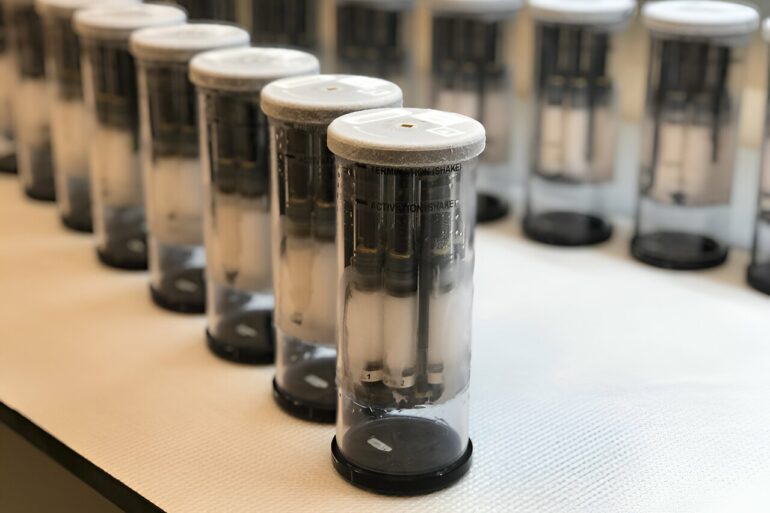After exposure in space aboard the International Space Station, a new kind of surface treatment significantly reduced the growth of biofilms, scientists report. Biofilms are mats of microbial or fungal growth that can clog hoses or filters in water processing systems, or potentially cause illness in people.
In the experiment, researchers investigated a variety of surfaces treated in different ways and exposed to a bacteria called Pseudomonas aeruginosa, which is an opportunistic pathogen than can cause infections in humans, especially in hospitals. The surfaces were incubated for three days aboard the space station, starting in 2019.
The results show that textured surfaces impregnated with a lubricant were highly successful at preventing biofilm growth during their long exposure in space. The findings are described in a paper published in the journal npj Microgravity, by Samantha McBride Ph.D. ’20 and Kripa Varanasi of MIT, Pamela Flores and Luis Zea at the University of Colorado, and Jonathan Galakza at NASA Ames Research Center.
Clogs in water recovery system hoses aboard the ISS have been so severe at times, the hoses had to be sent back to Earth for cleaning and refurbishing. And while it isn’t known whether biofilms have directly contributed to astronaut illnesses, on Earth, biofilms are associated with 65% of microbial infections, and 80% of chronic infections, the researchers say.
One approach to preventing biofilms is to use surfaces coated with certain metals or oxides that kill microbes, but this approach can fail when a layer of dead microbes builds up on the surface and allows biofilm to form above it. But this was not the case with the liquid-infused surface that performed well in the ISS experiments: Rather than killing the microbes, it prevented them from adhering to the surface in the first place.
The specific surface used was made of silicon that was etched to produce a nanoscale forest of pillars. This spiky surface is then infused with a silicon oil, which is drawn into the texture and held in place by capillary action, leaving a smooth and highly slippery surface that significantly reduces the adhesion of microbes and prevents them from forming a biofilm.
Identical experiments were conducted on Earth as well as on the space station to determine the differences produced by the microgravity environment in orbit. To the researchers’ surprise, the liquid-infused surface performed even better in space than it did on Earth at preventing microbial adhesion.
On previous and current space stations, including the USSR’s Mir station, Salyut 6, and Salyut 7, as well as the International Space Station, “they’ve seen these biofilms, and they jeopardize a variety of instruments or equipment, including space suits, recycling units, radiators, and water treatment facilities, so it’s a very important problem that needed to be understood,” says Varanasi, a professor of mechanical engineering and founder of a company called LiquiGlide, which makes liquid-impregnated surfaces for containers to help their contents slide out.
Previous tests on Earth had shown that these treated surfaces could significantly reduce biofilm adhesion. When the samples from the space station were



